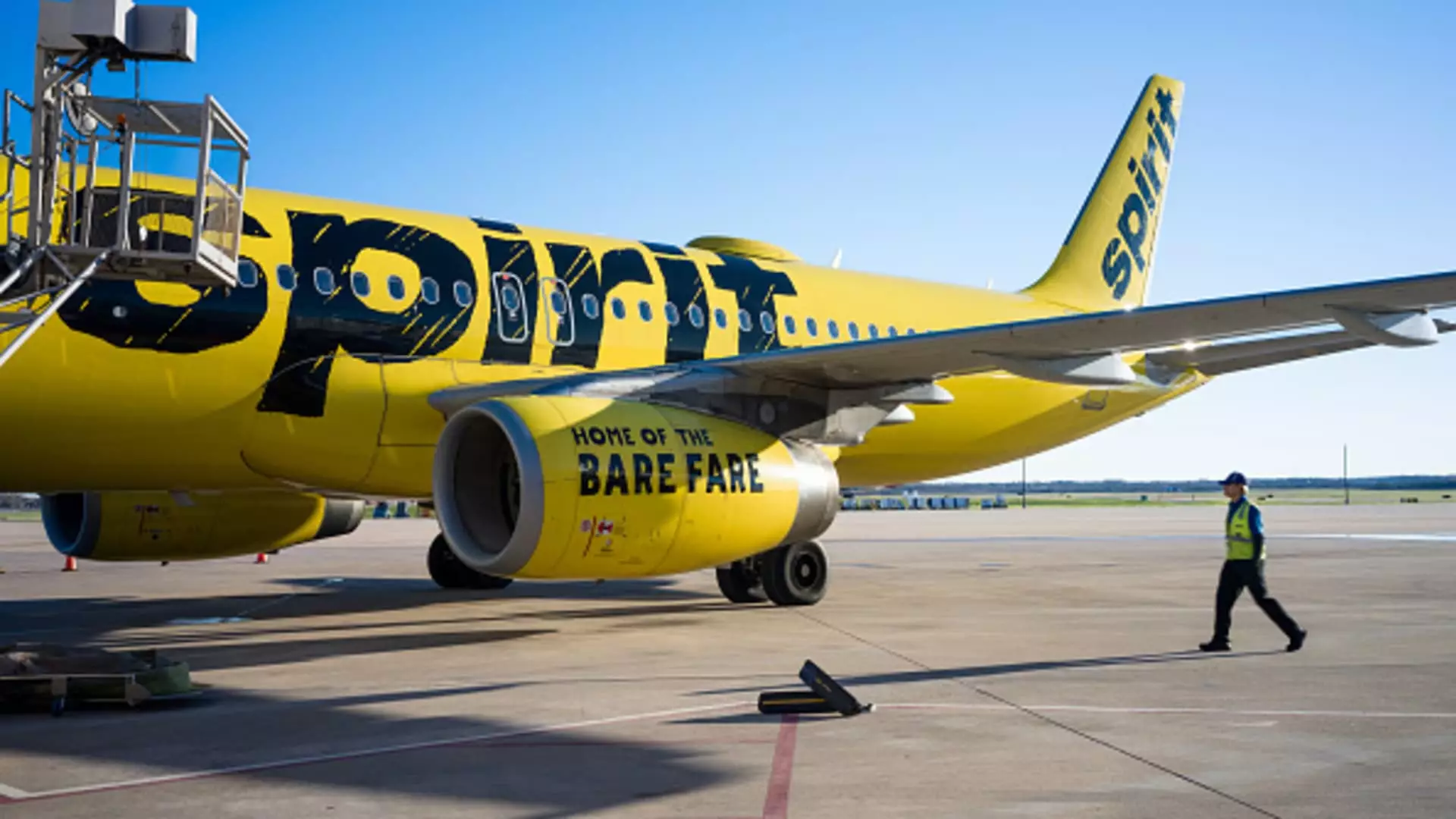Spirit Airlines has recently navigated through a complex financial landscape marked by significant borrowing and ongoing restructuring efforts. On a critical deadline day, the airline announced that it had reached a new agreement with its credit card processor, extending its debt refinancing timetable until December. This decision, made just hours before the original deadline, highlights the urgency of Spirit’s financial situation. The airline had drawn down the entirety of its $300 million revolving credit facility, indicating that it is resorting to drastic measures to maintain liquidity. As of now, Spirit expects to end the year with just over $1 billion in available cash, a potentially reassuring figure amidst mounting debts.
The financial strain on Spirit Airlines is starkly reflected in its stock performance. Trading on Friday revealed a further decline, as shares closed at a new low of less than $1.50, marking a dramatic drop of nearly 3%. The stock’s plummet is emblematic of larger trends affecting the airline, with shares having nosedived over 90% this year and nearly 40% just in October. Such a rapid decrease is a significant concern for investors and stakeholders alike, casting doubt on the airline’s future viability. Given the precarious financial health indicated by these figures, Spirit Airlines’ management faces the daunting task of restoring investor confidence while addressing underlying operational challenges.
In response to its liquidity crisis, Spirit has implemented several cost-cutting measures, including workforce furloughs, route cancellations, and the postponement of aircraft deliveries. These strategies underscore a broader trend seen within the airline industry as companies grapple with the repercussions of external pressures, such as the ongoing Pratt & Whitney engine recall that has rendered many of Spirit’s planes unusable. Moreover, the airline’s struggles are compounded by disappointing booking figures, further entrenching the company in a cycle of financial insecurity.
Adding to its woes, Spirit Airlines’ proposed acquisition by JetBlue Airways was thwarted by a federal court ruling on antitrust grounds, removing a potentially stabilizing factor from its financial equation. This failed merger illustrates the difficulties Spirit faces in finding a path forward, as it loses essential avenues for recovery and growth. With the looming specter of potential bankruptcy filing mentioned by sources, the airline must act swiftly to rectify its trajectory.
As Spirit Airlines charts a course through turbulent financial waters, the focus shifts to its ongoing negotiations with holders of senior secured notes due in 2025 and convertible senior notes due in 2026. These discussions are crucial for the airline’s long-term sustainability. The coming months will be pivotal as Spirit seeks to stabilize its operations and reassure investors of its commitment to restoring its financial health. With a blend of strategic refinancing, careful liquidity management, and addressing operational inefficiencies, Spirit Airlines is at a crossroads that could either lead to recovery or further decline.


Leave a Reply